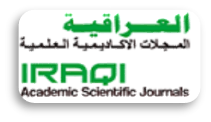Article Title
A Identification And Isolation Of Several Bacteria From Oral Cavity Among Human In Soran City
Document Type
Article
Abstract
The aim of this study has been to estimate that the number of bacteria in the mouth exceeds the total number of people on the planet. In this context, scientists have discovered more than 700 different types of human oral bacteria. With such a large number of oral bacteria present, many diseases that may threaten health, especially oral health, can emerge. For this reason, this study was employed and conducted on 252 healthy people in the Soran area of the city of Erbil. Both sexes were involved and different ages were selected. Swabs taken from 226 participants gave positive growths on different culture media. The biochemical properties of the isolates were tested according to Bergeys Manual of Systematic Bacteriology and UK Standards for Microbiology Investigation. The results showed that Staphylococcus aureus was the most frequent isolated pathogen (47.83%) followed by Pseudomonas aeruginosa (16.30%), Bacillus subtilis (23.91%), Enterococcus faecalis (5.43%), Enterobacter aerogenes (4.35%), and Klebsiella pneumonia (2.17%) respectively. Antibiotic Susceptibility testing of different species of bacteria was also performed according to Kirby Bauer disc diffusion method on Muller Hinton Agar by using commercial antibiotic discs. It seems that the different species of bacteria showed various sensitivity patterns to several kinds of antibiotics.
Keywords
Bacteria, Oral Cavity, Human, Antibiotics, Soran City
Recommended Citation
Balaky, Holem Hashm and Younis Al-Hammadi, Alaa Taha
(2021)
"A Identification And Isolation Of Several Bacteria From Oral Cavity Among Human In Soran City,"
Al-Qadisiyah Journal of Pure Science: Vol. 26
:
No.
5
, Article 8.
Available at:
https://doi.org/10.29350/qjps.2021.26.5.1384
Creative Commons License

This work is licensed under a Creative Commons Attribution-NonCommercial-No Derivative Works 4.0 International License.










